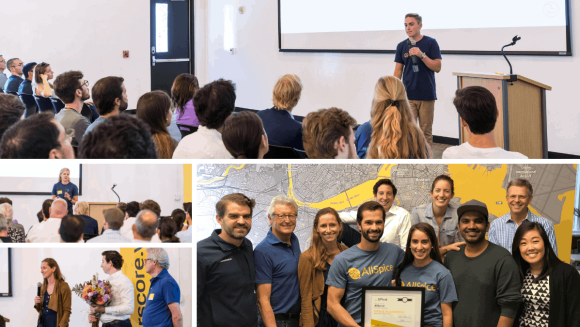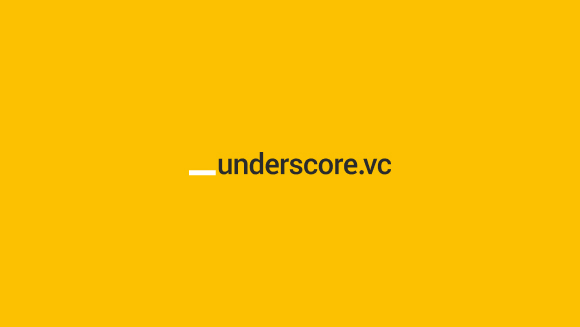Written by the Underscore Board Core, and edited by Emily Green.
Triggered by the societal weaknesses he saw revealed in the Western world’s response to Covid-19, venture capitalist Marc Andreessen penned a widely-read blog post, “It’s Time to Build.” In it, he describes our many failures in preventing, then battling, the virus, and characterizes them as a lack of will to build the things we need—from healthcare to education and more.
The Underscore VC Board Core gathered in early June to ask, is he right? Are we suffering because we didn’t want solutions badly enough to prioritize them?
In a way, we agreed: Back when there was no immediate demand for facemasks, we prioritized other things instead. But there’s more to it, we thought. For instance, our focus on just-in-time manufacturing and reliance on increasingly global supply chains made it difficult to act fast in response to the pandemic.
Investment Culture
We also identified challenges in Western investment culture which, perhaps conveniently, Andreessen didn’t mention. The lure of higher-leverage, higher-return investments—particularly software—diverts resources that could drive much-needed innovation in other sectors. Comments from our group:
“Does the world really need another marketing automation solution?”
“You wouldn’t see [Andreessen’s firm] looking at trench-building, although it’s much needed in many parts of the world and there are some very interesting solutions.”
“His own firm’s thesis is ‘Software is eating the world,’ so as a firm they’re clearly stepping around massive chunks of these opportunities.”
Complexities of Building
We also discussed the difficulty of building MVPs in the hardware sector, as well as the disparity in the amount of up-front capital required to get those startups off the ground.
“There’s been lots of money pumped into robotics recently, but investor appetite for unicorns means dumping large sums on one big bet, versus more broadly applying $10 million to each of a number of promising solutions.”
Thinking like an entrepreneur, Andreessen imagines burning the bridges in some arenas, rather than evolving. A fun and familiar thought exercise, but we asked how realistic that is.
“It isn’t just being willing to say what we’re doing now is fundamentally broken; it means annihilating it for something new. And that’s really hard to do politically.”
That led us further from his claim that we lack desire. For example, LaGuardia Airport, known for its delays and traffic jams, has an obvious need for infrastructure innovation. Users clearly want it—no one likes being stuck at the airport—but plans have been mired in a political morass. We contrasted that with China’s nearly over-the-top investments in hosting the Olympics.
“He points out how Singapore is an example of a dramatically modernizing city… but the core reason for that is a single central point of control. Same for China. Maybe the way to qualify the explanation is that the right people didn’t prioritize them.”
We clearly make tradeoffs in many Western societies. Singapore’s pandemic control includes requiring everyone to have an app on their phone to support contact tracing.
“And look at China’s aggressive buildout of high-speed railways. In the US, though, instead of centralized control, we prioritize individual freedoms, like limitations on eminent domain to preserve individual property rights.”
And even as we can legitimately criticize the slow response of our government and many others, we can also acknowledge the agility we are able to show both in government and private industry—coming up with many vaccine concepts and fast-tracking a number of them in parallel, and anticipating the need for billions of vials and syringes to deploy the vaccine.
Opportunities of Scale
Andreessen says another component of the answer is scale, pointing out that when we focus on creating scale, as with TVs and PCs, unit costs drop dramatically. So, he reasons, the government, through its contribution of funds to Harvard, should be requiring the school to scale its services so more people could get a Harvard education.
Again, we agreed to a degree: For instance, in education, “going remote is the best opportunity for scale we’ve ever had,” through a standardized curriculum, digital tools, etc. We considered Scott Galloway’s contention that the pandemic’s acceleration of the higher education crisis will lead to well-funded private sector leaders like Google and Amazon pairing up with higher ed to scale education to offer 80% of the value for 50% of the price. And yet:
“University professors are all individual entrepreneurs interested in their own little enterprises. The only universities that could do that are either private universities, the MITs and Stanfords, or ones that can hive off a team with more flexibility.”
We agreed there are standardization and scale opportunities across the US at the K-12 level, but there is also a real need to reimagine remote learning. This goes way beyond putting the teacher in front of a camera. Much like how the ecommerce experience has evolved since the early days of 3D aisle browsing, we need to re-think the entire approach to remote learning.
But we also noted a bigger need beyond the young person’s learning experience: facilitating life-long learning, creating the means to constantly and readily acquire new skills as the pace of change around us accelerates.
Prioritizing Innovation
Andreessen says his top three priorities are healthcare, education, and housing. We agreed: If everyone had equal access to healthcare and education, and a safe place to live, “we would unlock tremendous further potential in our society.”
We did observe, though, that the main challenges in housing don’t really stem from a lack of innovation; there are lots of creative solutions emerging in micro-housing, pre-fab structures, and more. Rather, the obstacles in housing are more around government and political will, e.g. zoning. So our third priority around things to build would be transportation.
As we closed, we asked ourselves: As angels or partners in institutional funds, are we putting our money where we think it’s most needed? Should there be a set-aside or tax of sorts, collected from investors and applied to harder, longer-range bets that will advance society in key ways? What would those be?
Andreessen ended his post with a challenge: “Tell me what you’ll build.” This quick response in our discussion gave us all a reality check:
“Let’s fix the digital divide. Online access has become a human right. It’s criminal that too many kids asked to learn remotely are trying to do that without basic tools and connectivity.”
In fact, that’s as crazy a state of affairs as what prompted Andreessen’s post in the first place: doctors wearing rain ponchos for lack of adequate PPE.
Lots to do.
Additional Resources:
A follow-up interview that Andreessen did, principally to talk about how he organizes his time, but which also includes some comments about his Time to Build post
A brilliant “rewrite” of Andreessen’s post by Gabe Kleinman, the one Kleiman says he wishes Marc had written, featuring additions and adjustments that broaden or narrow the critique in various ways
A Vox post by journalist Ezra Klein, in which he unpacks the political issues inherent in the failures that Andreessen talks about









